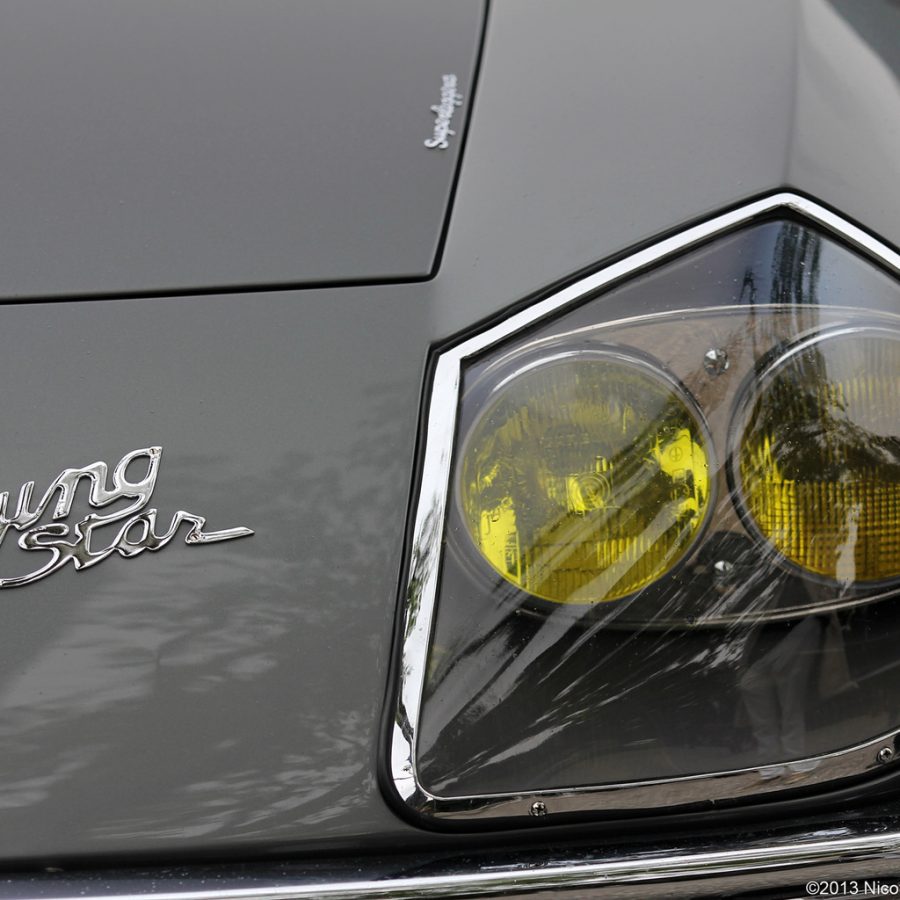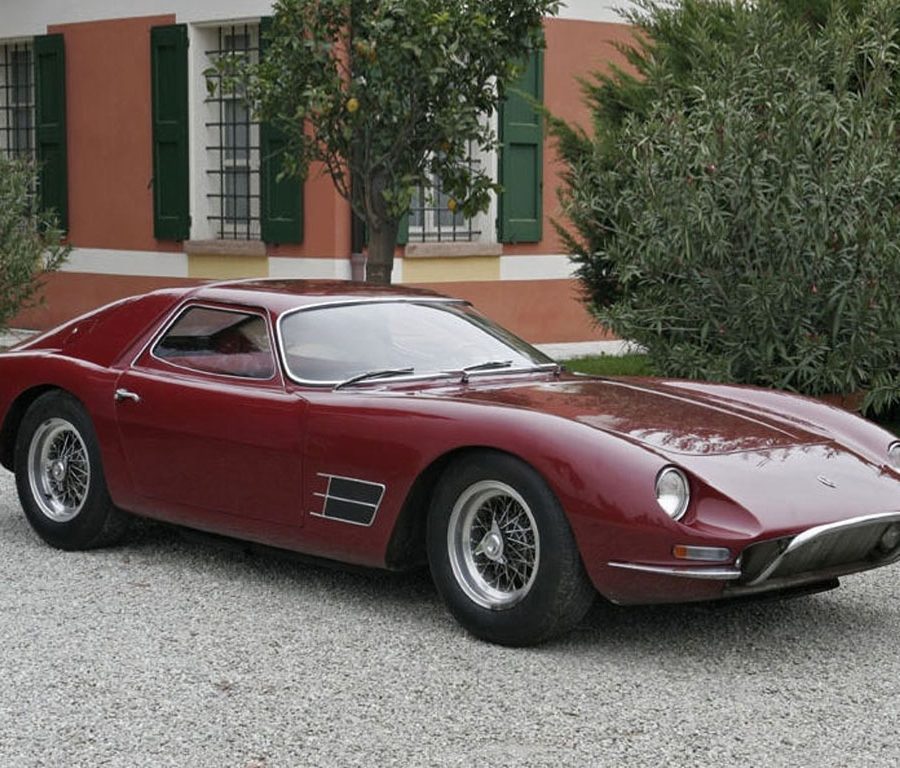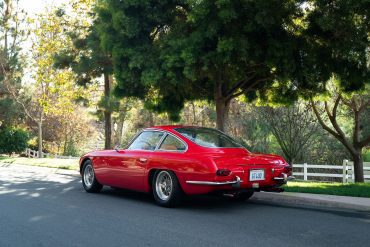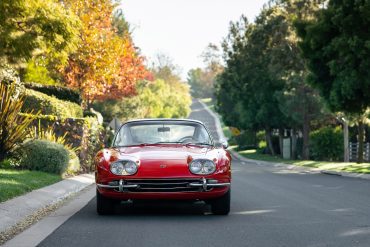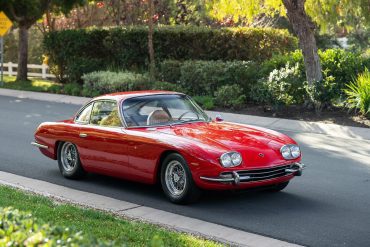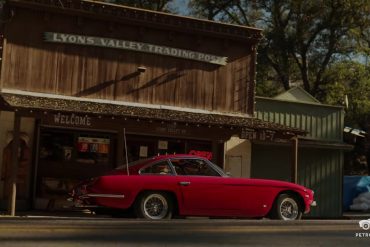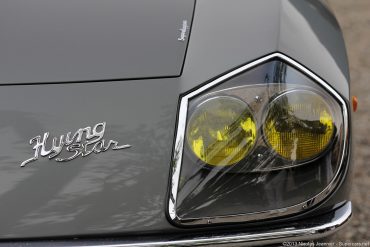1965→1966 Lamborghini 400 GT In 1965, Lamborghini offered as an option, the larger 4-litre engine in the 350 GT that turned it into the 400 GT. The engineers at Lamborghini increased the stroke from 77 to 82 for a total displacement of 3929cc. This brought over power from 270 to...
Lamborghini 400 GT
A More Refined GT
1966 - 1968
An evolution of the previous 350 GT, Lamborghini's 400 GT arrived on the market in 1966. This car featured a larger (4L) V12 engine as well as design adjustments and cosmetic changes to the interior. During the transition from the 350 GT to the 400 GT, a limited run of twenty-three 400 GTs was made featuring a 350 GT body, but with the updated 4L V12. These so called "interim" cars are a rare find on the market. After the 400 GT "Interim", the updated 400 GT 2+2 body entered production, with the most noticeable change being the addition of two rear seats, giving these cars their "2+2" moniker. As well as rear seats and cosmetic tweaks, the "2+2" model featured a new gearbox that greatly improved driveability.
Overview / Featured / Variants / Models In-Depth / Specs / Image Gallery / More Updates
Overview
In the illustrious history of Lamborghini, a marque renowned for its extraordinary supercars, the 400 GT holds a special place. Building upon the success of its predecessor, the 350 GT, Lamborghini introduced the 400 GT, a model that not only enhanced performance but also refined its grand touring capabilities, particularly in its 2+2 variant. This blog post delves into the Lamborghini 400 GT 2+2, exploring its design evolution, mechanical prowess, and the legacy it has cemented in the automotive world.
The Lamborghini 400 GT 2+2 was a natural evolution from the 350 GT, embodying a more matured and sophisticated design ethos. The car retained the elegant and flowing lines characteristic of its predecessor but introduced modifications to accommodate a 2+2 seating configuration, providing space for additional passengers without compromising its sleek silhouette. The bodywork, crafted with the expertise of Carrozzeria Touring, featured subtle yet impactful changes, including a slightly raised roofline and enlarged rear window, enhancing both headroom and visibility, making the 400 GT 2+2 a more practical and comfortable grand tourer.
The heart of the Lamborghini 400 GT 2+2 was its magnificent 4.0-liter V12 engine, an upgraded version of the 350 GT’s powerplant. This engine boasted an increased displacement, resulting in a robust 320 horsepower output, a significant boost that enhanced the car’s performance and driving dynamics. The power was delivered through a smooth five-speed manual gearbox, ensuring that the 400 GT 2+2 could effortlessly cruise at high speeds, embodying the grand touring ethos with power and poise. This combination of a refined engine and improved transmission solidified the car’s reputation as a formidable performer on the road.
Inside, the Lamborghini 400 GT 2+2 was the epitome of luxury, tailored to the discerning driver who sought both comfort and exhilaration. The interior was sumptuously appointed with high-quality leather, fine woods, and detailed craftsmanship, creating an environment that was both luxurious and inviting. The expanded 2+2 seating configuration offered a practicality seldom found in sports cars of its time, making the 400 GT 2+2 an ideal choice for those who desired a sportscar's performance with the functionality to accommodate additional passengers in comfort.
The Lamborghini 400 GT 2+2 was more than just a car; it was a statement of Lamborghini’s engineering excellence and design philosophy. Its production was limited, making it one of the more exclusive models in Lamborghini’s history. Today, it is celebrated not only for its beauty and performance but also for its role in establishing Lamborghini’s reputation in the grand touring segment. The 400 GT 2+2 paved the way for future Lamborghini models, influencing the design and engineering of subsequent grand tourers and contributing to the legacy of the brand as a maker of luxurious, high-performance vehicles.
The Lamborghini 400 GT 2+2 remains an iconic piece of automotive history, revered for its blend of stirring performance, elegant design, and grand touring capability. It encapsulates a moment in time when Lamborghini enhanced its prowess in creating cars that were as beautiful to look at as they were thrilling to drive. For collectors and enthusiasts, the 400 GT 2+2 is not just a rare gem but a testament to Lamborghini’s enduring commitment to automotive excellence. Its legacy continues to inspire, reminding us of a time when cars were the ultimate expression of art, engineering, and emotion on four wheels.
Lamborghini 400 GT Basics
Manufacturer: Lamborghini
Also called: Lamborghini 400 GT 2+2
Production: 1966–1968
Production: 247 built
Designer: Carrozzeria Touring
Body style: 2-door coupé
Layout: FR layout
Engine: 3.9 L (3,929 cc) V12
Transmission: 5-speed manual
Wheelbase: 2,550 mm (100.4 in)
Length: 4,470 mm (176.0 in)
Width: 1,727 mm (68.0 in
Height: 1,257 mm (49.5 in)
Kerb weight: 1,472 kg (3,245 lb)
Did You Know?
Lamborghini is known for its outrageous and aggressive supercars – the Miura, Countach, and Diablo readily come to mind. But in the mid-1960s, the young company took a slightly different approach with the 400 GT, a luxurious grand tourer. An evolution of that model, the 400 GTS, offered more refinement and a stylish open-top experience.
The 400 GT's smooth V12 power delivery and comfortable ride moved the game on from the 350 GT.
Sports Car Digest
Lamborghini 400 GT Variants
Production of the 400 GT began in 1966 with the 4-liter 12-cylinder engine that had already been used in the last 23 350 GT models. Compared to its predecessor, the 400 GT was restyled and made roomier, resulting in the first proper 2+2 Lamborghini four-seater model. Production ceased after 225 models, of which the last 70 were put on the market in 1969 with a few changes to the body and luxurious interiors in the Islero S version.

Lamborghini 400 GT (Production)
Years: 1965 – 1966
Engine: 3.9 L Nat Aspirated V12
Power: 320 hp @ 6,500 rpm
Torque: 276 lb-ft @ 4,500 rpm
0-60 mph: 7.4 seconds
Top Speed: 155 mph
The 400 GT was restyled and made roomier vs its predecessor, resulting in the first proper 2+2 Lamborghini four-seater model. Only 23 of the 400 GT were made, an interim stop gap between 350 GT and 400 GT 2+2.
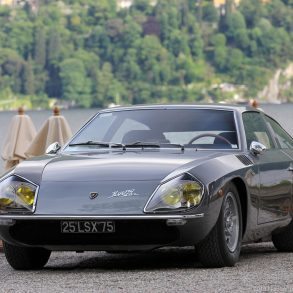
Lamborghini 4000 GT ‘Flying Star II’
Years: 1966 (One-Off)
Engine: 3.9 L Nat Aspirated V12
Power: 320 hp @ 6,500 rpm
Torque: 276 lb-ft @ 4,500 rpm
0-60 mph: 7.4 seconds
Top Speed: 155 mph
One of the very last cars designed by Carrozzeria Touring Superleggera was this unique Flying Star II show car. It was built on a shortened 400 GT chassis and had a controversial body by Carlo Anderloni.

Lamborghini 400 GT 2 + 2 (Touring)
Years: 1966 – 1968
Engine: 3.9 L Nat Aspirated V12
Power: 320 hp @ 6,500 rpm
Torque: 276 lb-ft @ 4,500 rpm
0-60 mph: 7.4 seconds
Top Speed: 155 mph
This new model accommodated a rear set of seats that couldn’t fit in the original design. Touring had to pay considerable attention to increasing interior space without losing the 350 GT’s elegant proportions.
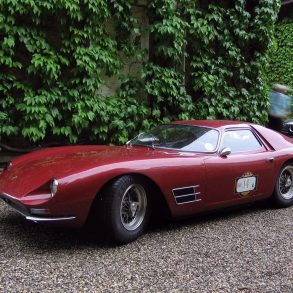
Lamborghini 400 GT Monza
Years: 1966 (One Off)
Engine: 3.9 L Nat Aspirated V12
Power: 320 hp @ 6,500 rpm
Torque: 290 lb-ft @ 5,000 rpm
0-60 mph: N/A
Top Speed: N/A
The 400 GT Monza was a one-off sports car that took its inspiration from the Lamborghini 400 GT and features a distinctive bodywork design. This was a two-seat sports car that was built for a client in the US.
The V12's power and the glorious exhaust note are addictive. We need more of this...
Car Magazine




